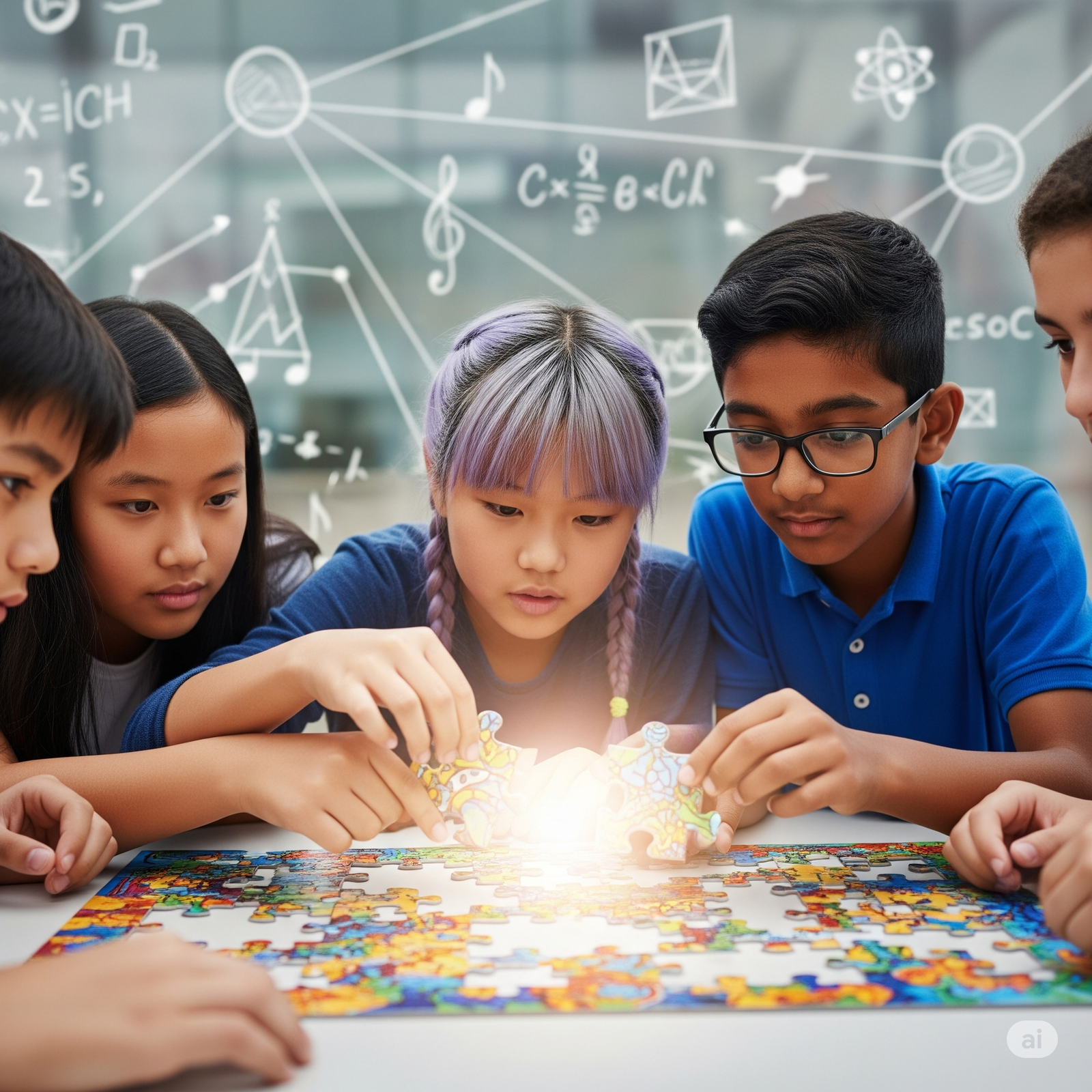AI & Bloom’s Understanding: Moving Students Beyond Simple Recall
From Knowing to Grasping – The Power of Understanding
Once students have successfully recalled basic facts and definitions, the next crucial step in their learning journey is to truly understand what those facts mean. This is the essence of Bloom’s Taxonomy’s “Understanding” level – where students learn to interpret, summarize, explain, classify, and compare information. It’s about making connections, seeing relationships, and grasping the significance of what they’ve remembered.
This stage is vital because it solidifies initial learning and prepares students to apply their knowledge to new and unfamiliar contexts. Without genuine understanding, facts remain isolated pieces of information, easily forgotten. Fortunately, Artificial Intelligence (AI) tools offer powerful new ways for teachers to create scaffolded comprehension activities that promote deeper connections and meaning-making across every subject area. Below, we explore AI tools that can be used in ELA, Mathematics, Science, and Social Studies to help students deepen their understanding of the content.
How AI Enhances the “Understanding” Level
AI tools are exceptionally well-suited to foster comprehension by providing diverse pathways to grasp complex ideas:
- Simplification and Elaboration: AI can rewrite complex texts or explanations into simpler language or, conversely, expand on ideas to provide more context.
- Summarization and Paraphrasing: AI can quickly generate summaries or guide students in paraphrasing, helping them distill key ideas in their own words.
- Question Generation: AI can create targeted comprehension questions, main idea prompts, or even provide varied perspectives for discussion.
- Visual and Conceptual Mapping: Some AI tools can help visualize relationships between concepts, aiding in holistic understanding.
- Comparative Analysis: AI can facilitate the comparison of different ideas, texts, or strategies, highlighting similarities and differences.
Integrating AI for Understanding: Subject-Specific Strategies
Here’s how AI tools can be leveraged across different subjects to cultivate deeper understanding:
English Language Arts (ELA):
- Tools: Twee (transform stories/nonfiction into comic scripts or summaries), MagicSchool AI (generate text-dependent questions, main idea practice, summarization prompts), ChatGPT/Gemini (explain literary concepts, analyze text structure, generate character analyses).
- Understanding Focus: Summarizing plots, identifying main ideas, explaining literary devices, interpreting character motivations, translating text into different formats.
- Example Tasks:
- Students use Twee to transform a chapter of a novel into a comic strip, demonstrating their understanding of plot and character interactions.
- MagicSchool AI generates varied text-dependent questions for a nonfiction article, prompting students to explain key arguments in their own words.
- Students use ChatGPT to simplify a complex Shakespearean passage and then explain its meaning to a peer.
Mathematics:
- Tools: Curipod, Gemini (compare strategies, model explanations of problem-solving steps, explain mathematical concepts in plain language), Khanmigo (provide step-by-step explanations, identify conceptual misunderstandings).
- Understanding Focus: Explaining problem-solving steps, describing mathematical concepts, comparing different solution strategies, interpreting data representations.
- Example Tasks:
- Students use Curipod to present and explain two different strategies for solving the same algebra problem.
- Gemini helps students understand the concept of “slope” by providing real-world analogies and visual examples.
- Khanmigo guides students in articulating why a specific mathematical error occurred in a given problem.
Science:
- Tools: Diffit (rewrite grade-level articles in simplified language), Immersive Reader (support comprehension of complex scientific texts), ChatGPT/Gemini (explain scientific processes, define terms in context, compare phenomena), Canva (create visual explanations of concepts).
- Understanding Focus: Explaining scientific processes (e.g., water cycle, digestion), paraphrasing experimental results, describing cause-and-effect relationships, interpreting scientific diagrams.
- Example Tasks:
- Diffit rewrites a complex article on climate change into an accessible version, and students then summarize the main arguments.
- Students use ChatGPT to explain the process of photosynthesis in simple terms to a younger student.
- An AI tool helps students describe the different phases of matter and provide examples for each.
Social Studies:
- Tools: AI-generated conversation prompts from Curipod, Parlay (promote historical interpretation and empathy-building through structured discussions), Diffit (simplify historical documents), MagicSchool AI (summarize historical events, explain political systems).
- Understanding Focus: Explaining historical events, summarizing primary source documents, interpreting cause-and-effect in history, comparing different cultural perspectives, describing government structures.
- Example Tasks:
- AI-generated prompts from Curipod facilitate a discussion where students explain the causes and consequences of a specific historical revolution.
- Students use Diffit to get a simplified version of a complex historical document (e.g., a Supreme Court ruling) and then explain its significance.
- Parlay helps students compare and contrast the perspectives of different groups involved in a historical conflict, explaining their motivations.
Best Practices for Fostering “Understanding” with AI:
To effectively use AI for comprehension, consider these best practices:
- Prompt for Paraphrasing and Summarization: Consistently ask students to summarize or paraphrase AI-generated content (or any content) using their own words. Provide sentence starters or frameworks to scaffold this.
- Simplify and Scaffold for Accessibility: Use AI to simplify complex texts or provide leveled reading passages, especially for English Language Learners (ELLs) and struggling readers. Pair simplified reading with structured discussion prompts.
- Encourage Student-Led Questioning: Empower students to use AI to generate their own comprehension checks, quizzes, or discussion questions for a given text or concept. This fosters active engagement and metacognition.
- Emphasize Explain-It-Like-I’m-Five: Challenge students to use AI to help them explain complex concepts as if they were teaching a younger sibling. This forces simplification and clarity.
- Utilize Comparative Prompts: Ask students to use AI to compare two different concepts, events, or strategies, then explain the similarities and differences.
Sample Tasks for “Understanding” with AI:
- ELA: Students summarize a short passage in comic format using Twee, demonstrating their grasp of the narrative. (DOK 2 – Skill/Concept)
- Math: Students use an AI tool to explain the difference between two problem-solving strategies for a given equation, articulating the advantages of each. (DOK 2 – Skill/Concept)
- Science: Students paraphrase the results of a simple experiment described by an AI, focusing on the key findings and their implications. (DOK 2 – Skill/Concept)
- Social Studies: Students use AI-generated dialogue to compare perspectives in a historical event, explaining the motivations and beliefs of different groups. (DOK 2 – Skill/Concept)
Ready to Deepen Student Understanding with AI?
Download the Understanding-Level Task Template to get scaffolded examples and recommended tools.







